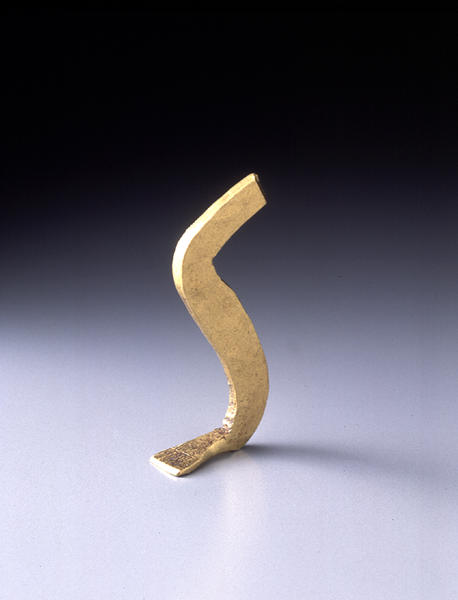Leg
- 3rd - 2nd century B.C.
- Gold
- H-3.1 W-0.5
Catalogue Entry
3rd‐2nd century B.C.
Gold
H. 3.1 cm, W. 0.5 cm
The Greek Hippocrates is credited with founding the medical sciences unrelated to magic or ritual. And yet, as can be seen from the spread of the worship of the god of healing Asclepius in the Mediterranean world started around the 6th century BC, it was very hard for the Greek world to separate the medical sciences from religion. The ruins of temples to this god can be found in Greece, Etruria (Italy) and in Asia Minor, and undoubtedly many of the people from Asia Minor who moved to Takht-I Sangin brought with them their beliefs in this god of healing. This belief included the practice of offering relief depictions of this god Asclepius healing the patient as thanks for that cure. During the Hellenistic period, this practice may have turned to the depiction of only the part that was healed. Thus eyes, arms, legs were used as representatives of the healed part, and they were offered as thanks by the patient healed. Or they were offered as prayers asking for such parts to be healed. As seen in cat. Nos. 82 through 85, gold sheets were either incised and pressed with these images, or gold lumps were pressed into gratitude-filled images of eyes, arms and legs.
